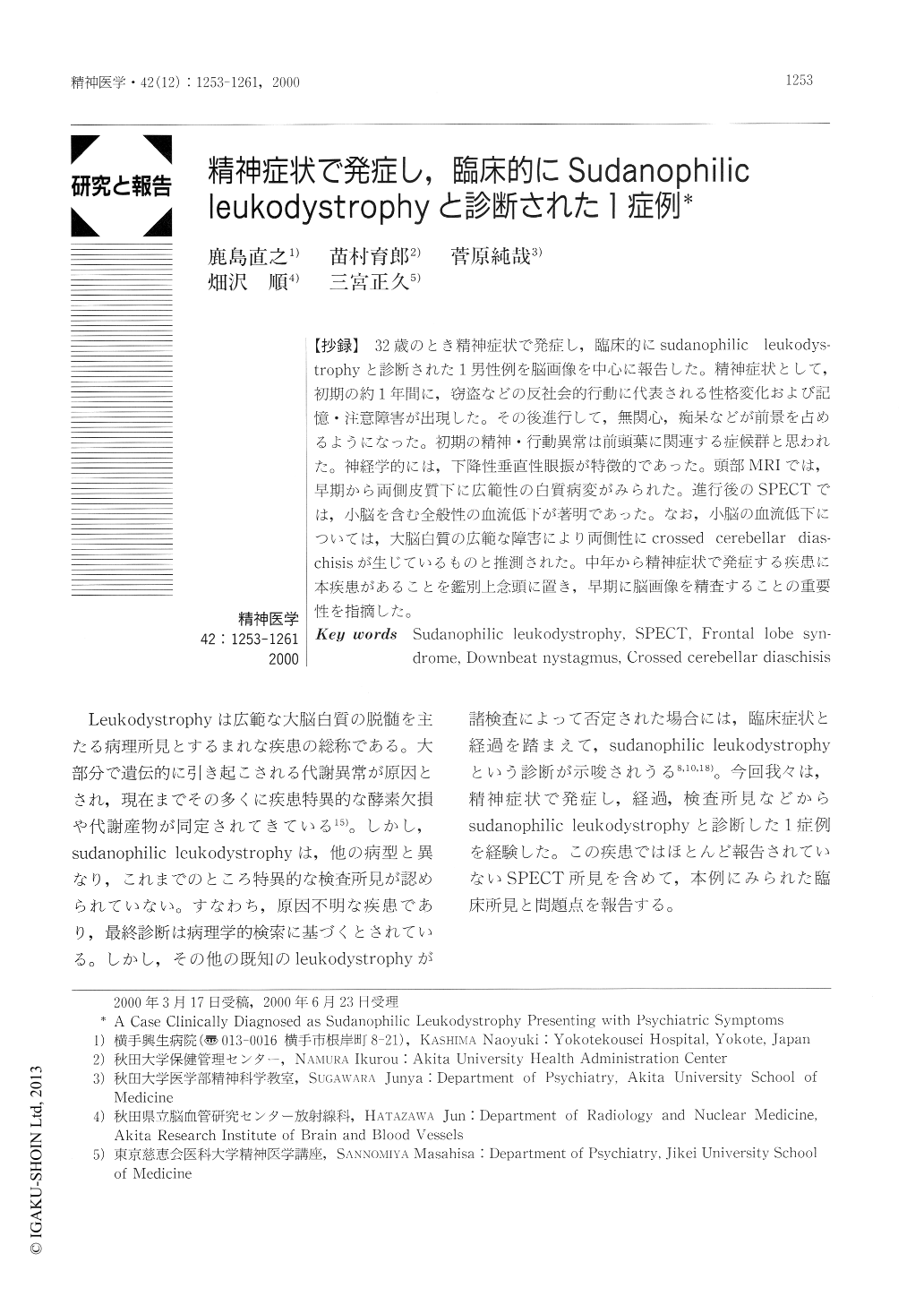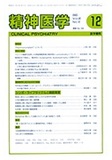Japanese
English
- 有料閲覧
- Abstract 文献概要
- 1ページ目 Look Inside
【抄録】 32歳のとき精神症状で発症し,臨床的にsudanophilic leukodystrophyと診断された1男性例を脳画像を中心に報告した。精神症状として,初期の約1年間に,窃盗などの反社会的行動に代表される性格変化および記憶・注意障害が出現した。その後進行して,無関心,痴呆などが前景を占めるようになった。初期の精神・行動異常は前頭葉に関連する症候群と思われた。神経学的には,下降性垂直性眼振が特徴的であった。頭部MRIでは,早期から両側皮質下に広範性の白質病変がみられた。進行後のSPECTでは,小脳を含む全般性の血流低下が著明であった。なお,小脳の血流低下については,大脳白質の広範な障害により両側性にcrossed cerebellar diaschisisが生じているものと推測された。中年から精神症状で発症する疾患に本疾患があることを鑑別上念頭に置き,早期に脳画像を精査することの重要性を指摘した。
Sudanophilic leukodystrophy (SLD) is a rare type of leukodystrophy with no specific biochemical or genetical abnormality detected so far. SLD is not diagnosed until other types of leukodystrophies and demyelinating diseases due to other causes are excluded. We reported a 36-year-old male, clinically diagnosed as sudanophilic leukodystrophy. He slowly developed character changes such as antisocial behaviour and robbery, memory and attention disturbance during the first year of the disease at 32 years of age. In the advanced stage, his condition deteriorated to dementia. On admission at 35 years old, his grade on the HDS (Hasegawa dementia scale) was 11/ 30. Seven months later, tonic-clonic convulsion was observed. Then one year later, spastic hemiplegia gradually ocurred, which was thought to be related to damage in the pyramidal tract. Neurologically, downbeat nystagmus was characteristic.
An electroencephalogram showed a moderate amount of 4-6 Hz random θ waves in the back-ground of irregular 10-11 Hz α activity. Nerve conduction velocities in the extremities were normal. Adrenocortical function was normal and plasma very long chain fatty acid content was almost normal. The activities of leukocytic lysosomal enzymes, such as arylsulfatase A, β-galactosidase, α-galactosidase, β-glucosidase, hexosaminidase A, α-mannosidase, α-fucosidase, galactosylceramidase were all within the normal ranges. Cerebrospinal fluid was normal.
The characteristic white matter changes on MRI and the absence of any laboratory abnormality suggested the diagnosis of sudanophilic leukodystrophy. Since the early stage, MRI of his brain demonstrated diffuse symmetrical T 2-high and T1-low abnormalities in confluent areas of the white matter. SPECT disclosed diffuse cerebral and cerebellar hypoperfusion, in the advanced stage. The white matter abnormalities on MRI and the cerebellar hypoperfusion on SPECT might represent bilateral crossed cerebellar diaschisis. In Japan, this is the third case report of clinically diagnosed sudanophilic leukodystrophy studied by SPECT and the first case of leukodystrophy with crossed cerebellar diaschisis. Frontal lobe syndrome and typical frontal hypoperfusion were demonstrated in the all cases.

Copyright © 2000, Igaku-Shoin Ltd. All rights reserved.


